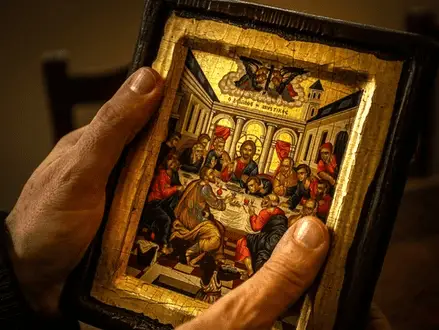Religion is a universal phenomenon manifested in almost every culture, tradition, and society. Many people mistakenly believe that religious practices are just an abstract concept existing and referring exclusively to places of worship and separate individuals. However, if you look closer at the reality, you will ascertain one simple fact: religion is omnipresent, and religious art is good proof of that.
Religious art is a distinct form of expression inspired by sacred motives and ideas. It is worth noting that artists should not necessarily be religious people to practice and create ecclesiastical art pieces, be they paintings, religious icons, sculptures, or buildings of any kind. What is more important is how this particular type of art continues to shape modern culture and society, along with our perception of life. If you want to find out more, you should look at the following five ways of how holy art makes the difference.

5 ways religious art shapes modern culture and society
1. A fertile source of creative inspiration
Quite often, it is difficult to draw the line between secular and religious art. The fact is that all major forms of creativity (painting, sculpture, architecture, theatre, music, literature, etc.) have always been products of the environment that is religious to the core. That is why you can see a whole range of artworks containing clues on religion, especially when it comes to Baroque and Renaissance art.
Special attention should be given to traditional icon painting. Antique Russian icons have been some of the most integral elements of Orthodox Christianity over centuries. Moreover, they played a significant role in the promotion of the culture and lives of devoted Christians. Nowadays, they haven’t fallen in importance and continue to be some of the cornerstones of the Orthodox faith.
2. Historical significance
Like any other art, religious art is enormous storage of knowledge from the past. Archaeologists and historians often turn to different religious artifacts, manuscripts, inscriptions, and other materials to explore a certain period in history or find more data about particular historical figures. If you’re interested in biblical texts and their interpretations, you should definitely pay attention to icons and paintings by both prominent and unknown artists. That is how you can get insight into the subject from the artistic point of view.

3. Art in its natural form
Above all, religious art is a full-fledged form of art, striving for the same goal and serving the same purposes as others. First and foremost, it carries out ritualistic and symbolic functions. Take, for example, magical and spiritual rituals and dances. Besides, you must have heard about the psychological and healing effects that art can exert on people. In terms of sacred art, it is all about the purification of the soul, to say nothing of its unique ability to soothe your anxious mind, no matter whether you are a religious person or not.
4. A religious message
Some people are against religion, and some people are for it. But there is one thing that everyone can agree upon: there is a load of good lessons on life and morality in it. Religious art, in this case, is a powerful tool for conveying moral and social messages to all people. For instance, many outstanding sculptors, including Michelangelo, Bernini, Donatello, Auguste Rodin, and Guido Galletti, were known for incorporating biblical images in their sophisticated sculptures, thus popularising the ideas encoded in the Bible.

5. A means of provocation
Some people believe that contemporary art and religion are at odds. In reality, though, things are a bit different. On the one hand, you can clearly see religion being mixed with the unconventional current trends. On the other hand, even if sacred art is criticized and thus rejected by some contemporary artists, it provokes other artists to experiment more and abandon conventional cannons. Surprisingly, this is how a conflict of generations and cultures may produce real progress.
Religious art is one of the driving forces behind changes in contemporary society. Cultural development has always been closely intertwined with the growth and dissemination of fine art. Over the years, the situation hasn’t changed much – the only thing that really has changed is people’s attitude toward both religion and art.























